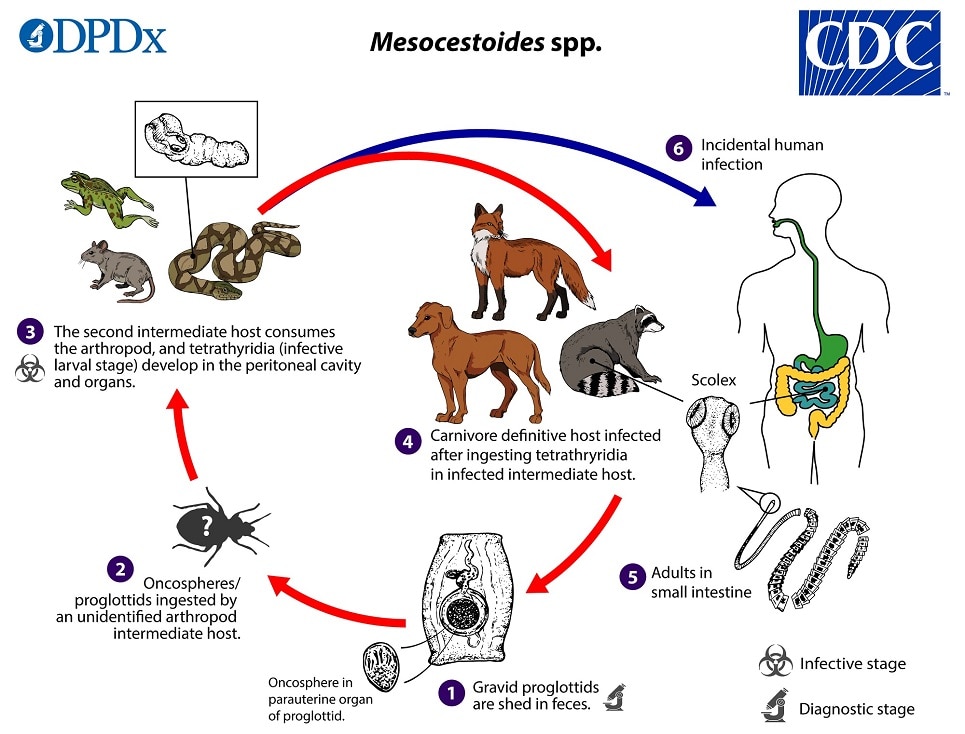
Mesocestoidiasis
[Mesocestoides spp.]
Causal Agents
Cestodes (tapeworms) in the genus Mesocestoides are common in carnivores but only very rarely infect humans. Although Mesocestoides spp. are classified as Cyclophyllidea, they share biological characteristics with Pseudophyllidea. Some life cycle features remain unknown. Species implicated in zoonotic infections include M. lineatus and M. variabilis, though the relationships between species in this genus is a status of ongoing research.
Life Cycle
Most evidence suggests three hosts (including an arthropod intermediate host, a vertebrate intermediate host, and a carnivore definitive host) are required for completion of the life cycle of Mesocestoides spp. Gravid, motile proglottids are shed in feces of the definitive host  . Proglottids contain many eggs within the parauterine organ, a structure unique to Mesocestoides
. Proglottids contain many eggs within the parauterine organ, a structure unique to Mesocestoides  . Eggs lack a true shell, possessing only a thin embryophore enveloping a six-hooked oncosphere. The first intermediate host (presumed to be an arthropod)
. Eggs lack a true shell, possessing only a thin embryophore enveloping a six-hooked oncosphere. The first intermediate host (presumed to be an arthropod)  becomes infected after eating proglottids or oncospheres. In the first intermediate host, it is believed the oncosphere develops into an undescribed larval stage probably similar to a cysticercoid or procercoid. When the first intermediate host is eaten by the vertebrate second intermediate host
becomes infected after eating proglottids or oncospheres. In the first intermediate host, it is believed the oncosphere develops into an undescribed larval stage probably similar to a cysticercoid or procercoid. When the first intermediate host is eaten by the vertebrate second intermediate host  , the larva develops into an infective larva (tetrathyridium) in the peritoneal cavity or in viscera. Asexual proliferation of tetrathyridia within the intermediate host has been observed occasionally in some Mesocestoides spp., although it is not known if this represents an abnormal state. The carnivorous definitive host ultimately becomes infected after eating tissue infected with tetrathyridia
, the larva develops into an infective larva (tetrathyridium) in the peritoneal cavity or in viscera. Asexual proliferation of tetrathyridia within the intermediate host has been observed occasionally in some Mesocestoides spp., although it is not known if this represents an abnormal state. The carnivorous definitive host ultimately becomes infected after eating tissue infected with tetrathyridia  . Upon ingestion, the scolex of the tetrathyridium evaginates and becomes anchored to the small intestinal mucosa, where it matures into an adult cestode. Gravid proglottids are passed typically 2-3 weeks post infection in the natural host. Humans are believed to become infected after eating undercooked meat or viscera containing tetrathyridia
. Upon ingestion, the scolex of the tetrathyridium evaginates and becomes anchored to the small intestinal mucosa, where it matures into an adult cestode. Gravid proglottids are passed typically 2-3 weeks post infection in the natural host. Humans are believed to become infected after eating undercooked meat or viscera containing tetrathyridia  .
.
Hosts
The normal definitive hosts are terrestrial carnivores, including canids, felids, procyonids, mustelids, and opossums. The actual host specificity of Mesocestoides spp. is poorly defined due to extensive morphological overlap among species.
Tetrathyridia have been recovered from hundreds of intermediate host species of mammals (particularly rodents), birds, amphibians, and reptiles. Domestic canids and occasionally felids, which typically serve as definitive hosts, may also become infected with tetrathyridia as intermediate hosts.
The identity of the arthropod intermediate host of Mesocestoides spp is unknown. Several arthropods have been proposed as first intermediate hosts, including ants and oribatid mites. However, none of these species have been definitively demonstrated to serve as intermediate hosts. Experimental attempts to infect arthropods have not been successful.
Geographic Distribution
Mesocestoides spp. occur broadly in wild and domestic animals and have been found on every inhabited continent except for Australia. M. lineatus is an Old World species reported from Asia, Europe, and Africa. M. variabilis is endemic to North America.
Zoonotic infections have been identified in Japan and Korea (M. lineatus) following ingestion of raw snake and turtle liver. Cases of M. variabilis have been reported from the United States.
Clinical Presentation
Infections with Mesocestoides spp. reported in humans have typically involve low numbers of worms. Non-specific, recurrent gastrointestinal signs/symptoms have been reported.
To date, no larval-stage infections (tetrathyridia) have been identified in humans.
Adults are 40-150 cm long and the strobila can contain more than 400 proglottids. Immature proglottids are about three times broader than long, and mature but non-gravid proglottids are nearly square. Gravid proglottids are longer than wide and contain a parauterine organ that encloses a mass of eggs. The scolex has four suckers, but no rostellum or hooklets.
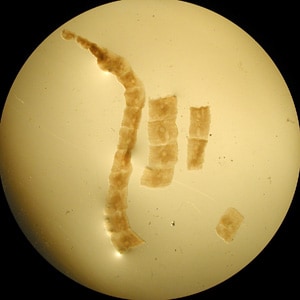
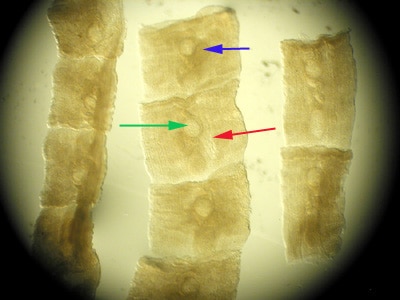
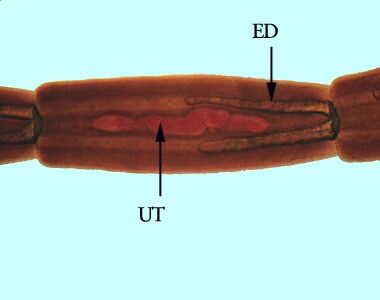
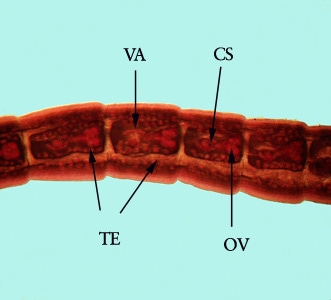
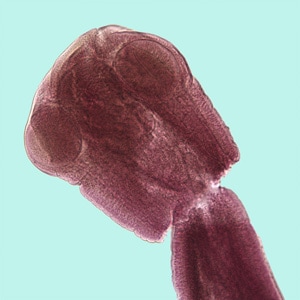
Numerous vertebrates can serve as the second intermediate host, in which the infective third-stage larva (tetrathyridium) develops. The definitive host becomes infected upon ingestion of tetrathyridia, which are found within body cavities or organs of second intermediate hosts. Tetrathyridia possess an invaginated scolex with four suckers and are often surrounded by a thin cyst wall.


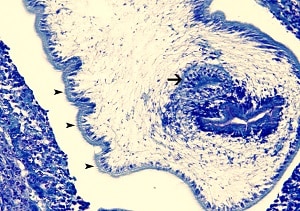

Laboratory Diagnosis
Diagnosis of Mesocestoides sp. is based on the morphological identification of proglottids in the stool. While gravid proglottids have a characteristic morphology, immature proglottids may be difficult to differentiate from those of Diphyllobothriidae. Accurate identification of species is complicated and requires complete specimens.
Laboratory Safety
Standard protocols for the processing of stool samples apply.
Suggested Reading
Fuentes, M.V., Galan-Puchades, M.T. and Malone, J.B., 2003. A new case report of human Mesocestoides infection in the United States. The American journal of tropical medicine and hygiene, 68(5), pp.566-567.
DPDx is an educational resource designed for health professionals and laboratory scientists. For an overview including prevention, control, and treatment visit www.cdc.gov/parasites/.
